If I have a screw terminal block like in the picture below, is it normal practice to use one of the six connections for GND towards multiple external boards?
E.g. I wrap three wires into the rightmost connection and each of the three wires go to a separate board? (and likewise for VCC)?
Are there disadvantages to such method? It saves a lot of terminal blocks in my case.
